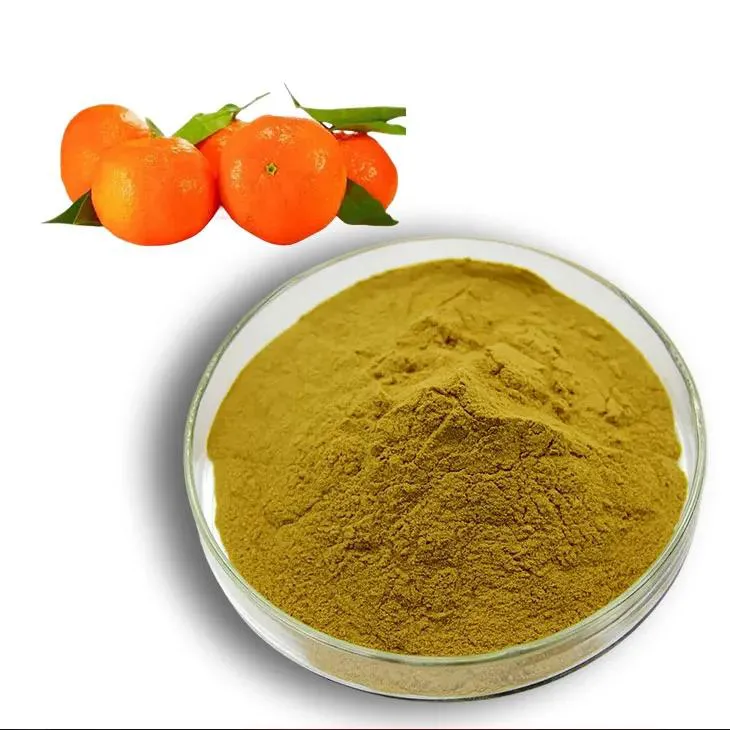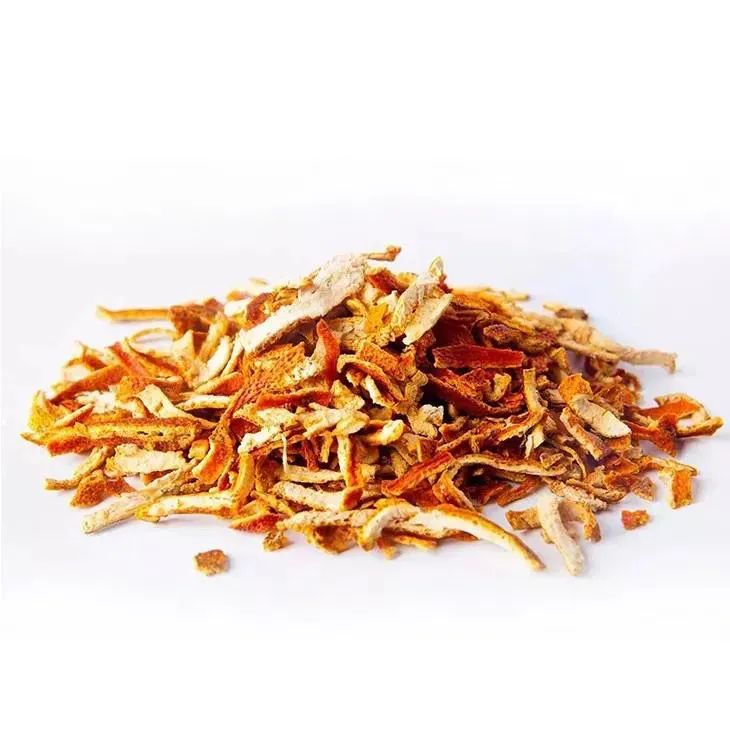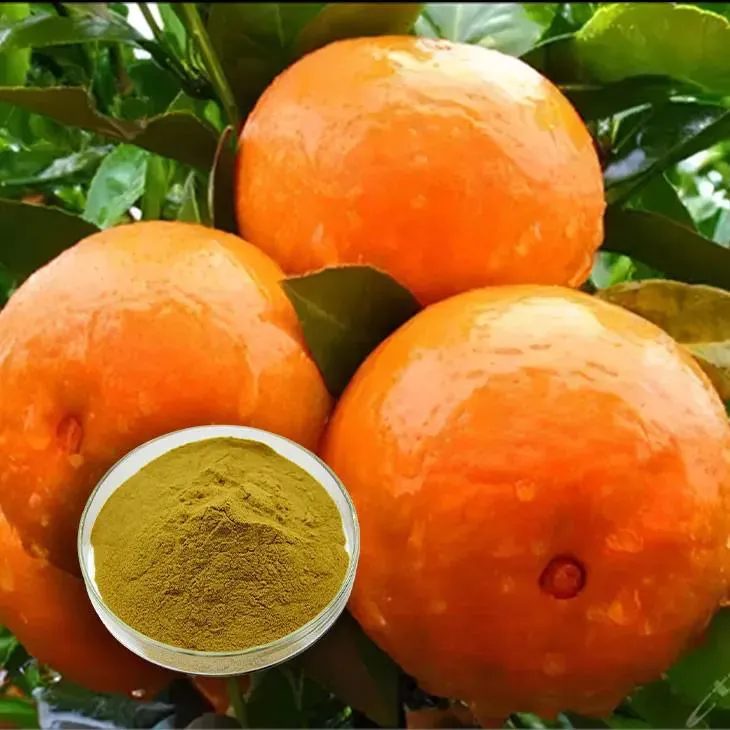- 0086-571-85302990
- sales@greenskybio.com
Flavor of Mature Citrus Bioflavonoids and Natural Citrus Bioflavonoids
2024-11-11

1. Introduction
Citrus fruits are well - known for their rich content of bioflavonoids. These bioflavonoids play crucial roles in various aspects, including antioxidant activity, anti - inflammatory effects, and potential health benefits in human nutrition. In this article, we focus on the differences between mature Citrus bioflavonoids in terms of flavor and natural Citrus bioflavonoids, as well as their antioxidant activity, bioavailability, and significance in nutrition.

2. Maturity and Flavor of Citrus bioflavonoids
2.1 Changes during Maturity
As citrus fruits mature, there are significant changes in the composition of bioflavonoids, which in turn affect their flavor. During the ripening process, the concentration of certain bioflavonoids may increase or decrease. For example, Hesperidin, a common bioflavonoid in citrus, may undergo chemical modifications. In immature citrus, the levels of some bitter - tasting bioflavonoids might be relatively high. As the fruit matures, these levels can change, leading to a more balanced and pleasant flavor profile.
2.2 Impact on Taste
The flavor of citrus bioflavonoids is a complex combination of bitterness, sweetness, and other taste components. Immature citrus bioflavonoids often contribute more bitterness to the overall taste. This bitterness can be attributed to the presence of certain flavonoid glycosides. As the citrus matures, the enzymatic breakdown or transformation of these compounds can reduce the bitter taste and enhance the sweetness. The change in flavor is not only important for the palatability of the fruit itself but also has implications for the use of citrus bioflavonoids in food and beverage products.
3. Antioxidant Activity: Mature vs. Natural Citrus Bioflavonoids
3.1 Antioxidant Mechanisms
Both mature and natural citrus bioflavonoids possess antioxidant properties. Antioxidants work by neutralizing free radicals, which are unstable molecules that can cause damage to cells. Bioflavonoids achieve this through various mechanisms, such as donating hydrogen atoms or electrons to stabilize free radicals. Quercetin, another important citrus bioflavonoid, is known for its strong antioxidant capacity. It can scavenge a wide range of free radicals, including superoxide anions and hydroxyl radicals.
3.2 Comparison of Antioxidant Activity
While both types of bioflavonoids are antioxidant - rich, there can be differences in their antioxidant activity levels. Mature citrus bioflavonoids may have different antioxidant activities compared to natural ones due to changes in their chemical structure during the ripening process. Some studies suggest that in certain cases, mature citrus bioflavonoids might have enhanced antioxidant activity. This could be because of the formation of more stable antioxidant compounds or the increased availability of active antioxidant moieties. However, it is also important to note that the antioxidant activity can be influenced by many factors, such as extraction methods and the presence of other compounds in the citrus matrix.
4. Bioavailability of Mature and Natural Citrus Bioflavonoids
4.1 Factors Affecting Bioavailability
Bioavailability refers to the proportion of a substance that can be absorbed and utilized by the body. For citrus bioflavonoids, several factors affect their bioavailability. One of the key factors is their chemical form. Flavonoid glycosides, which are common in citrus, need to be hydrolyzed to their aglycone forms for better absorption. In addition, the presence of dietary fiber and other components in the citrus can influence the release and absorption of bioflavonoids. The gut microbiota also plays a role in the metabolism of bioflavonoids, which can further impact their bioavailability.
4.2 Comparison in Bioavailability
The bioavailability of mature and natural citrus bioflavonoids can vary. Mature citrus bioflavonoids may have different bioavailability characteristics compared to natural ones. For example, during the ripening process, changes in the cell wall structure of the citrus fruit can affect the release of bioflavonoids. In some cases, mature citrus bioflavonoids might be more easily released and absorbed due to the breakdown of cell walls. However, this is not always the case, and more research is needed to fully understand the differences in bioavailability between the two types of bioflavonoids.5. Significance in Nutrition
5.1 Health Benefits
Citrus bioflavonoids, whether from mature or natural sources, offer numerous health benefits. They are associated with reduced risk of chronic diseases, such as cardiovascular diseases. Their antioxidant properties help in protecting the body against oxidative stress, which is implicated in the development of many diseases. Additionally, bioflavonoids may have anti - inflammatory effects, which can contribute to the overall well - being of the body. For example, they can help in reducing inflammation in the arteries, thus lowering the risk of atherosclerosis.
5.2 Role in Dietary Intake
Citrus fruits are a common part of the human diet, and the bioflavonoids they contain are an important component of a healthy diet. Understanding the differences between mature and natural citrus bioflavonoids can help in optimizing dietary intake. Consumers can make more informed choices about when to consume citrus fruits to obtain the maximum benefits from their bioflavonoids. For instance, if a particular bioflavonoid with high antioxidant activity is more available in mature citrus, individuals may choose to consume more fully ripe citrus fruits for better antioxidant protection.6. Conclusion
In conclusion, mature citrus bioflavonoids and natural citrus bioflavonoids have differences in flavor, antioxidant activity, bioavailability, and significance in nutrition. The changes in flavor during the maturation of citrus fruits are an important aspect of their palatability and use in food products. The antioxidant activity and bioavailability differences between the two types of bioflavonoids need further exploration to fully understand their implications for human health. However, it is clear that citrus bioflavonoids, regardless of their source, are valuable components of a healthy diet and offer a wide range of potential health benefits.
FAQ:
Question 1: How does the maturity of citrus affect the flavor of its bioflavonoids?
The maturity of citrus can significantly impact the flavor of its bioflavonoids. As citrus fruits mature, there are changes in the chemical composition. Immature fruits may have a more tart or astringent flavor due to higher levels of certain acids and less developed flavor - enhancing compounds. During maturation, the balance of bioflavonoids and other metabolites shifts. Mature citrus bioflavonoids often have a more complex and well - rounded flavor profile. For example, in mature oranges, the bioflavonoids contribute to a sweeter, more nuanced flavor compared to unripe oranges.
Question 2: What are the differences in antioxidant activity between mature citrus bioflavonoids and natural citrus bioflavonoids?
Both mature citrus bioflavonoids and natural citrus bioflavonoids possess antioxidant activity. However, the antioxidant activity can vary. Mature citrus bioflavonoids may have different antioxidant capabilities depending on the changes in their chemical structure during the maturation process. In some cases, as citrus matures, the bioflavonoids may become more oxidized themselves, which could potentially affect their antioxidant activity. Natural citrus bioflavonoids, which refer to those in their unaltered state in the fruit, generally have a characteristic antioxidant profile. But overall, the antioxidant activity is also influenced by factors such as extraction methods and the presence of other compounds in the matrix.
Question 3: How does bioavailability differ between mature and natural citrus bioflavonoids?
The bioavailability of bioflavonoids can be different for mature and natural citrus bioflavonoids. Bioavailability refers to the proportion of a substance that can be absorbed and utilized by the body. For mature citrus bioflavonoids, changes during maturation may affect their solubility and interaction with other components in the digestive tract. For instance, some chemical modifications during ripening could make them more or less accessible for absorption. Natural citrus bioflavonoids, in their original state, may have a different bioavailability profile. The presence of certain substances in the immature fruit, like high levels of fiber or unripe - related metabolites, might limit the absorption of bioflavonoids compared to the more processed state in mature fruits.
Question 4: Why are citrus bioflavonoids important in the field of nutrition?
Citrus bioflavonoids are important in nutrition for several reasons. Firstly, their antioxidant properties help in neutralizing free radicals in the body, which are associated with various diseases and aging processes. Secondly, they may have anti - inflammatory effects, reducing chronic inflammation in the body. Thirdly, some citrus bioflavonoids are thought to play a role in maintaining cardiovascular health by improving blood vessel function and reducing cholesterol levels. Additionally, they can contribute to a healthy immune system and may have potential benefits for eye health.
Question 5: Can the flavor of mature citrus bioflavonoids be used as an indicator of their nutritional value?
The flavor of mature citrus bioflavonoids cannot be directly used as a sole indicator of their nutritional value. While the flavor is related to the chemical composition of the bioflavonoids, which in turn is related to their potential nutritional properties, it is a complex relationship. A pleasant flavor may suggest certain chemical profiles, but it does not comprehensively represent all aspects of nutritional value. For example, a sweet - tasting bioflavonoid - rich extract may have good antioxidant activity, but other important nutritional aspects such as anti - inflammatory potential or bioavailability are not directly reflected by the flavor.
Related literature
- Bioflavonoids in Citrus Fruits: Composition, Bioactivity and Health Benefits"
- "The Impact of Maturity on Nutritional Compounds in Citrus"
- "Antioxidant Activity of Citrus Bioflavonoids: A Comprehensive Review"
- ▶ Hesperidin
- ▶ Citrus Bioflavonoids
- ▶ Plant Extract
- ▶ lycopene
- ▶ Diosmin
- ▶ Grape seed extract
- ▶ Sea buckthorn Juice Powder
- ▶ Fruit Juice Powder
- ▶ Hops Extract
- ▶ Artichoke Extract
- ▶ Mushroom extract
- ▶ Astaxanthin
- ▶ Green Tea Extract
- ▶ Curcumin
- ▶ Horse Chestnut Extract
- ▶ Other Product
- ▶ Boswellia Serrata Extract
- ▶ Resveratrol
- ▶ Marigold Extract
- ▶ Grape Leaf Extract
- ▶ New Product
- ▶ Aminolevulinic acid
- ▶ Cranberry Extract
- ▶ Red Yeast Rice
- ▶ Red Wine Extract
-
White mustard seed extract
2024-11-11
-
Senna Leaf Extract
2024-11-11
-
Quercetin
2024-11-11
-
Lavender Extract
2024-11-11
-
Cranberry Extract
2024-11-11
-
Mulberry Extract
2024-11-11
-
White Willow Bark Extract
2024-11-11
-
Eyebright Extract
2024-11-11
-
Agaricus Blazei Extract
2024-11-11
-
Kupilu Extract
2024-11-11





















